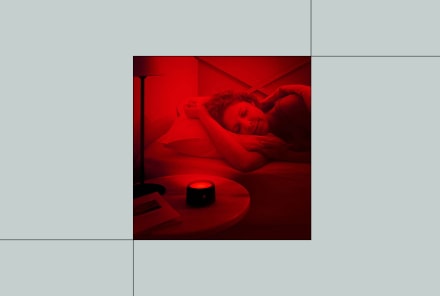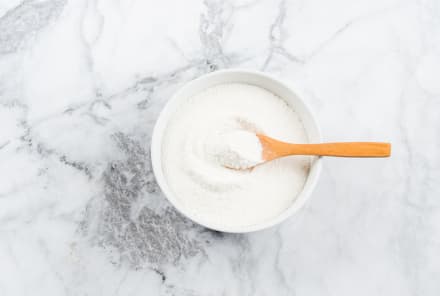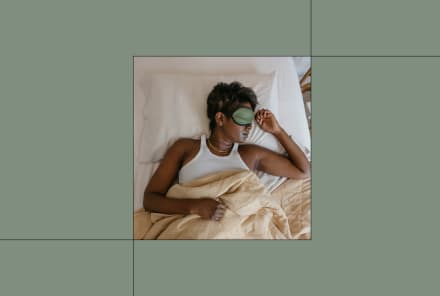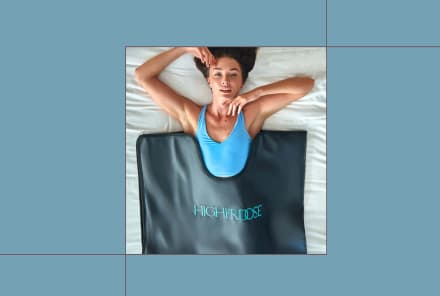Advertisement
I'm A Memory Coach: How I Hack My Sleep Routine To Boost My Cognition


For the longest time, sleep was a significant challenge for me. As a child, I regularly pulled all-nighters, studying tirelessly to compensate for my learning difficulties. This lifestyle led to the development of serious sleep issues.
As time went on, I came to understand that lack of sleep affects various cognitive functions, including memory and focus, and can harm overall brain health1. After undergoing a sleep study, I was diagnosed with severe obstructive sleep apnea. Following multiple treatments and surgery to address the physical obstruction, my sleep improved significantly. It was a turning point for me, as I realized that getting quality sleep at the right time is as crucial as other cornerstones of health, like proper nutrition and hydration.
Now, I prioritize bedtime in order to maintain my brain health and ensure I'm ready to tackle each day effectively. In a nutshell, my nightly routine revolves around disconnecting from screens, incorporating relaxation techniques like meditation and hot baths, and ensuring a pitch-dark sleeping environment to optimize my sleep quality and overall cognitive performance.

- Average hours I sleep a night: 6 to 6½ hours is usually how long I need.
- Ideal bedtime: 10 p.m.
- Ideal wake-up time: 5 a.m.
- Nightstand essentials: A fiction book and a journal to record my thoughts and dreams. One thing I don't have on my nightstand is a phone.
- Favorite place I've ever slept: Honestly, my bed. I travel a lot, and my bedroom is a sleep sanctuary for me.
- Sleep bad habit: I don't have any bad habits when it comes to sleep. I prioritize sleep; it's one of my nonnegotiables.
- Caffeine consumption: No caffeine past 12 o’clock. I'm sensitive to caffeine, and it can stay in your system for 8 to 10 hours.
- How I track my sleep: I use an Oura ring.
- The last product or habit that changed my sleep for the better: Creating a signal for my body to create melatonin by taking hot baths and showers, avoiding screens, and keeping my bedroom dark and cool.

8:30 p.m.: I like to take a hot bath with Epsom salt or magnesium, or sometimes I opt for a hot shower. When we were hunters and gatherers, we would have very clear signals of when to go to sleep because it would get darker and cooler at night. Taking a hot bath or shower can help mimic this: It raises our core body temperature, and then once we step out, our core temperature drops. That sends a signal to the body to produce the sleep hormone melatonin. Plus, the warmth is soothing, and it helps relax my muscles.
9 p.m.: Put my phone away in the bathroom (so it's away from next to my bed), then review my plan for the next day. Before bedtime, I focus on giving my mind a break and avoiding screens and electronic devices. The blue light from screens can also interfere with the production of melatonin, so I steer clear of them for at least an hour before bedtime.
9:05 p.m.: Read an enjoyable book. When I read before bed, I stick to fiction books. Nonfiction reading tends to engage the analytical part of the brain, and before sleep, I want to ensure my mind is in a relaxed state. Fiction allows me to escape into a different world, which is perfect for winding down.
9:30 p.m.: I spend some time stretching. I usually use a foam roller too.
9:40 p.m.: I then move into yoga nidra, which promotes deep relaxation. Meditation is also one of my go-to practices. It helps calm my mind and gets me into the right mindset after a busy day.
10 p.m.: I turn out all the lights and fall asleep. I keep my bedroom as dark as possible—eliminating light sources from screens and other devices. Darkness helps signal to the body that it's time to sleep, and it's been incredibly effective for me.
5 a.m.: Wake up time! My morning ritual begins with a choice—As soon as I wake up, I avoid the urge to reach for my phone right away. Starting the day by checking your phone can put you in a state of distraction right from the get-go, as a single text or email can hijack your mood and focus.
Instead, I lie in bed with my eyes closed and engage in a brief mental exercise: I imagine myself returning to bed at the end of the day, when my wife asks me, "How was your day?" My response is always, "Amazing." To achieve this ideal day, I set specific goals for both my personal and professional life. I identify three key objectives in each category. This exercise serves as a form of priority management, helping me stay focused and motivated throughout the day.
Watch Next
Enjoy some of our favorite clips from classes
Enjoy some of our favorite clips from classes
What Is Meditation?
Mindfulness/Spirituality | Light Watkins
Box Breathing
Mindfulness/Spirituality | Gwen Dittmar
What Breathwork Can Address
Mindfulness/Spirituality | Gwen Dittmar
The 8 Limbs of Yoga - What is Asana?
Yoga | Caley Alyssa
Two Standing Postures to Open Up Tight Hips
Yoga | Caley Alyssa
How Plants Can Optimize Athletic Performance
Nutrition | Rich Roll
What to Eat Before a Workout
Nutrition | Rich Roll
How Ayurveda Helps Us Navigate Modern Life
Nutrition | Sahara Rose
Messages About Love & Relationships
Love & Relationships | Esther Perel
Love Languages
Love & Relationships | Esther Perel
What Is Meditation?
Box Breathing
What Breathwork Can Address
The 8 Limbs of Yoga - What is Asana?
Two Standing Postures to Open Up Tight Hips
How Plants Can Optimize Athletic Performance
What to Eat Before a Workout
How Ayurveda Helps Us Navigate Modern Life
Messages About Love & Relationships
Love Languages
Advertisement

This Little-Known Supplement Helps Women Sleep & Decreases Signs Of Depression
Molly Knudsen, M.S., RDN

This Little-Known Supplement Helps Women Sleep & Decreases Signs Of Depression
Molly Knudsen, M.S., RDN















